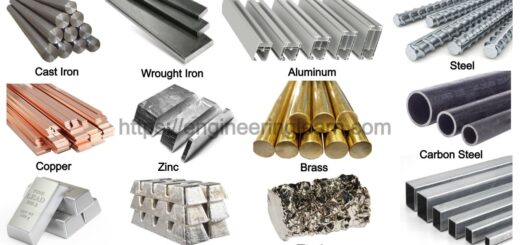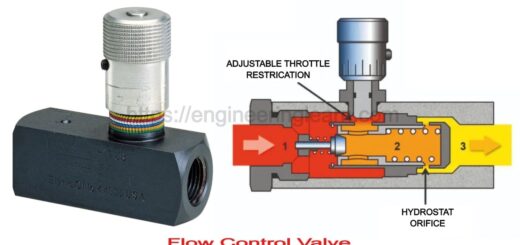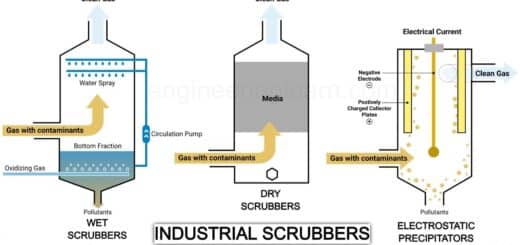Parts of Lathe Machine – [Explained with Complete Details]
![Parts of Lathe Machine - [Explained with Complete Details]](https://engineeringlearn.com/wp-content/uploads/2023/03/Parts-of-Lathe-Machine-1024x539.jpg)
Introduction
Parts of Lathe Machine – [Explained with Complete Details]: – Lathe Machine is one of the most seasoned machine tools in the production machine. This Machine is otherwise called the “mother, of all machines”. The main lathe machine is a basic lathe machine that is presently called a two-man machine. In this one individual would turn the woodwork piece utilizing a rope and the other individual would turn the work piece utilizing a sharp tool. The main function of the lathe is to eliminate the material from the work piece and make the work piece the ideal shape and size. During the movement of the lathe machine, the work piece is pivoted against the tool to accomplish material removal or expulsion as well as the direction of the tool movement becomes feed.
What is a Lathe Machine?
A lathe machine is a flexible tool that is utilized to shape and cut different materials, like metal, wood, and plastics. It is a sort of mechanical device that rotates the work piece on its axis, permitting the cutting tool to move along and eliminate material to create the ideal shape.
Lathe Machines can be operated manually or utilizing computer numerical control (CNC) innovation, and they come in a range of sizes and designs to suit various applications. They are generally utilized in manufacturing and machining industries for producing parts with exact dimensions and complex shapes. The Parts of a lathe machine incorporate the bed, tailstock, headstock, carriage, tool post, and many more parts which have their own particular elements and benefits.
Parts of Lathe Machine
Below are different parts of the Lathe Machine with a brief description:-
1. Bed: ( Parts of Lathe Machine )
A lathe bed is the principal base or foundation of a lathe machine that upholds the wide range of various components of the machine like the headstock, tailstock, and carriage. It is normally made of cast iron or steel, and its shape can shift contingent on the design of the lathe. The lathe bed is essentially designed to provide precision and strength during machining operations as the lathe bed is an essential part of the lathe machine and plays a very important role in the functioning of the lathe machine. It is normally designed in such a way so that it will be durable and sturdy, as well as long-lasting, ready to get withstand the constant vibrations and stresses of machining activities and operations.
The three significant units mounted on a bed are:
- Headstock.
- Tailstock.
- Carriage.
2. Tailstock: ( Parts of Lathe Machine )
The tailstock is a portable casing located inverse of the headstock on the way of the bed.
The essential function of the tailstock is: –
- To support the opposite end of the work while being machined.
- To hold a tool for performing operations like drilling, reaming, tapping, and so on.
It comprises the dead centers the adjusting screws, and the hand wheel. The body of the tailstock is flexible as well as adaptable on the base which is mounted on the guideways of the bed and can be moved.
3. Headstock: ( Parts of Lathe Machine )
The headstock is available on the left end of the bed. The principal function of the headstock is to transmit power to the various parts of the lathe. It upholds the main spindle in the bearing and aligns it appropriately. It likewise houses a vital transmission mechanism with speed-changing levers to obtain various speeds.
4. Carriage: ( Parts of Lathe Machine )
Between the headstock and tailstock carriage is located. The role of the Carriage is that it holds, moves, and controls the cutting tool. It gives rigid or unbending support to the tool during the operation. Carriage further transfers and exchanges power from the feed rod to the cutting through the apron 1 longitudinal cross-feeding.
It consists of 5 main parts:
- Saddle
- Cross Slide
- Compound rest
- Apron
- Tool Post
(i) Saddle
Saddle plays a very important role and it provides support to cross-slide, compound rest, and tool post. The shape of the saddle is H-shaped which is mounted on the top of the lathe ways.
(ii) Cross Slide
A cross slide is provided at the top of the saddle where male dovetail is assembled, with a female dovetail on another side. The cross slide top surface is furnished with T-slots to empower or engage the fixing of the rear tool post or coolant connection. The carriage fundamentally provides a mounted or automatic cross-movement for the cutting tool.
(iii) Compound Rest
Compound rest is available on the top of the cross slide. It upholds the tool post and cutting tool in its different positions. The role of Compound rest is very important. It is crucial for turning angles and boring short tapers and forms on forming tools.
(iv) Apron
The Apron is fastened, secured, and joined to the saddle and further hangs over the front of the bed. The apron comprises the gears and clutches for transmitting motion from the feed rod to the carriage, and the split nut which draws in with the lead screw during cutting threads.
Two types of Apron are extensively used:
- Incorporating drop worm mechanism.
- Friction or dog clutches.
(v) Tool Post
At compound rest, the tool post is mounted. Holding different cutting tool holders is utilized. Wedge which is shaped, formed, and molded on the base to fit into a concave-shaped ring on holder’s rest, which permits the height of the cutting edge to be changed by tilting the tool. It is fixed on the top slide. By the movement of the seat, cross slide, and top slide tool post gets its movement.
The three kinds of tool posts that are generally utilized are:-
- Ring and rocker tool post: It includes a roundabout tool post with a slot attached for accommodating the tool.
- Quick change tool post
- Square head tool post.
5. Feed Rod: ( Parts of Lathe Machine )
A power transmission system which is used for definite linear movement of the carriage along the longitudinal axis of the lathe machine is known as feed rod. In some lathe machines rather than feed rods lead screws are utilized.
6. Lead Screw: ( Parts of Lathe Machine )
The lead screw is utilized generally for the situation while the threading operation is to be performed on a lathe machine. As we probably are aware threading operation requires rotational movement of the job (work piece) and the linear motion of the tool. So rotation of the job is obtained by the chuck and the ideal linear motion of the tool post (as the lead screw drives the seat when it is secured) is provided with the help of a lead screw.
7. Chuck: ( Parts of Lathe Machine )
Chuck is fundamentally used to hold the work piece, especially of short length and large diameter or of sporadic shape which can’t be conveniently mounted between centers.
Four distinct sorts of chucks are most ordinarily utilized in Lathe Machines:
- Independent or four-jaw chuck
- Three-jaw or universal chuck
- Collect chuck
- Magnetic chuck
(i) Independent or Four-jaw Chuck
Independent chuck is used for irregular, sporadic, or unpredictable shapes, rough castings of square or octagonal in such positions, where a hole is to be positioned off the center. It comprises four jaws and each jaw is independently impelled and adjusted by a key for holding the work.
(ii) Three Jaw or Universal Chuck
It comprises three jaws that move at the same time by turning a key and the work piece consequently stays in the center of the chuck opening. It is utilized for holding a round, hexagonal bar or other symmetric work.
(iii) Collet Chuck
It is for the most part utilized in the places where production work is required like in Capstan lathes or automats. It is utilized for holding bars of small sizes.
(iv) Magnetic Chuck
They are long-lasting magnet type or electrically operated. In lathe Machine, it doesn’t have widespread use.
Conclusion
It is fundamental and essential for anybody to understand the basics of lathe machines with an interest in machining, fabricating, or DIY projects that incorporate molding or shaping materials. Lathe machines are effective and can produce excellent parts in a relatively brief timeframe. They are designed to be not difficult to set up and operate, and with the right tools and techniques, they can produce parts rapidly and efficiently. They are likewise versatile and can be utilized to create a wide range of parts, which makes them a cost-effective venture for businesses and people who need to create custom parts or prototypes. They can be utilized to create custom threads, angles, and shapes, which makes them ideal for producing parts for unique applications.













